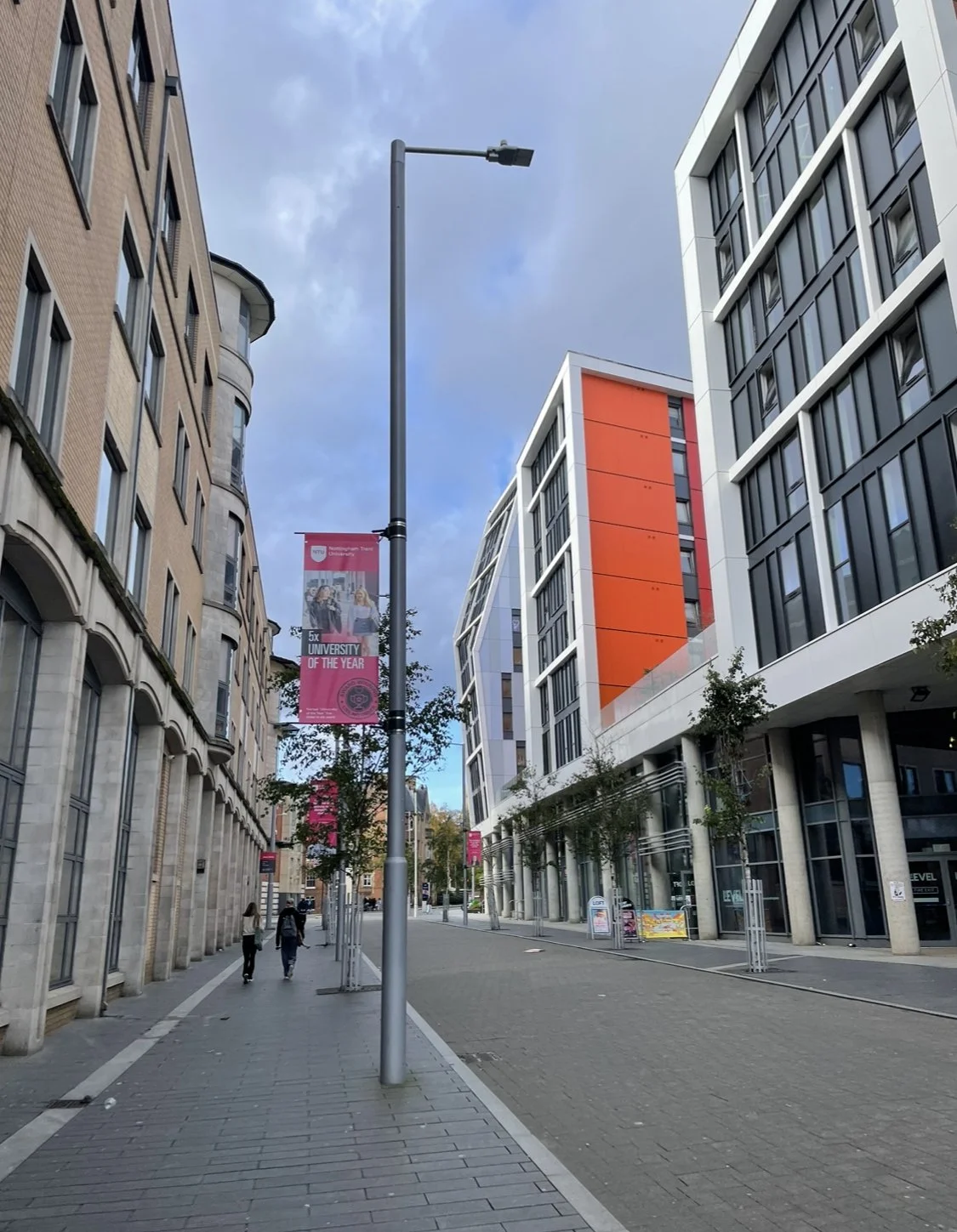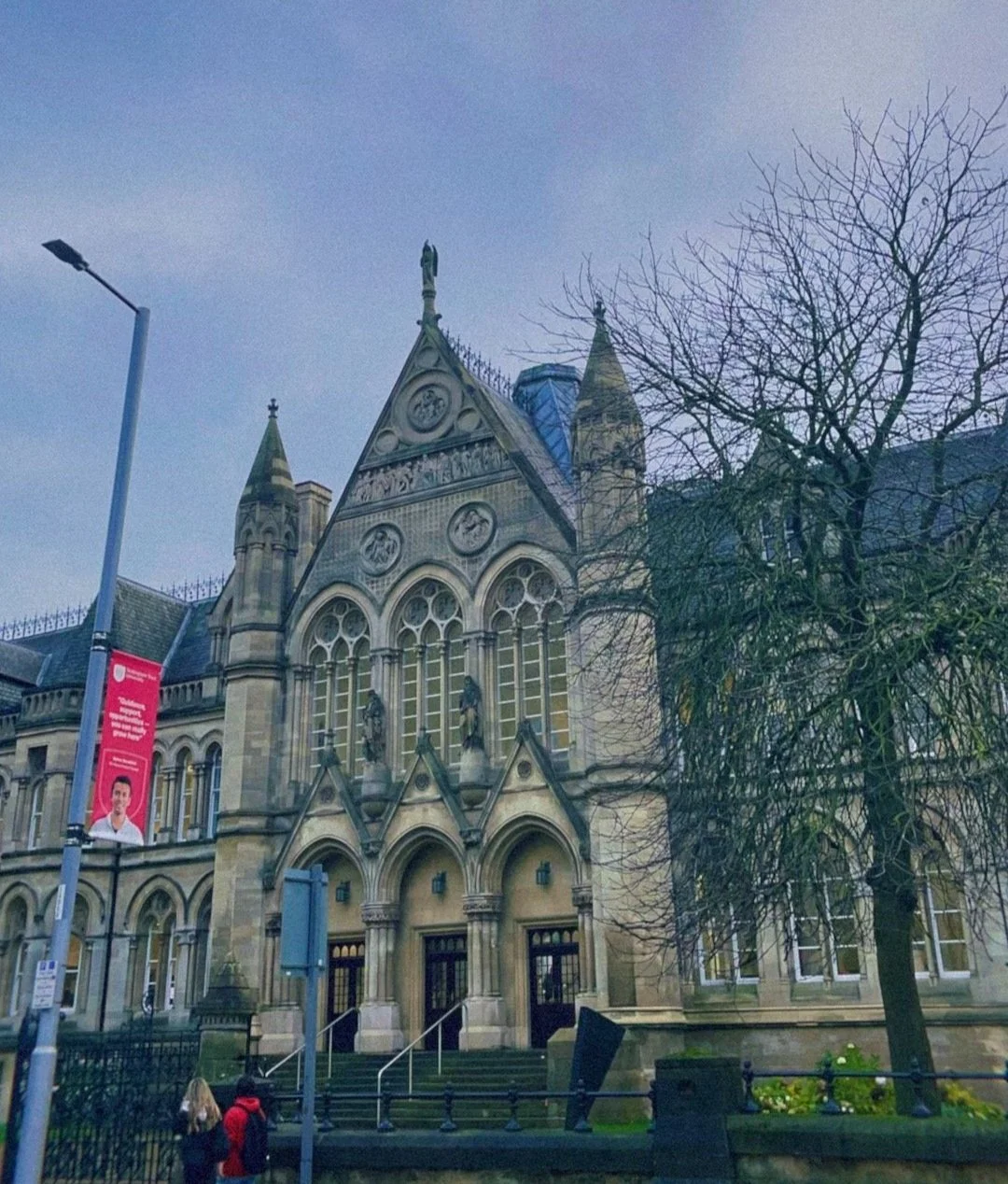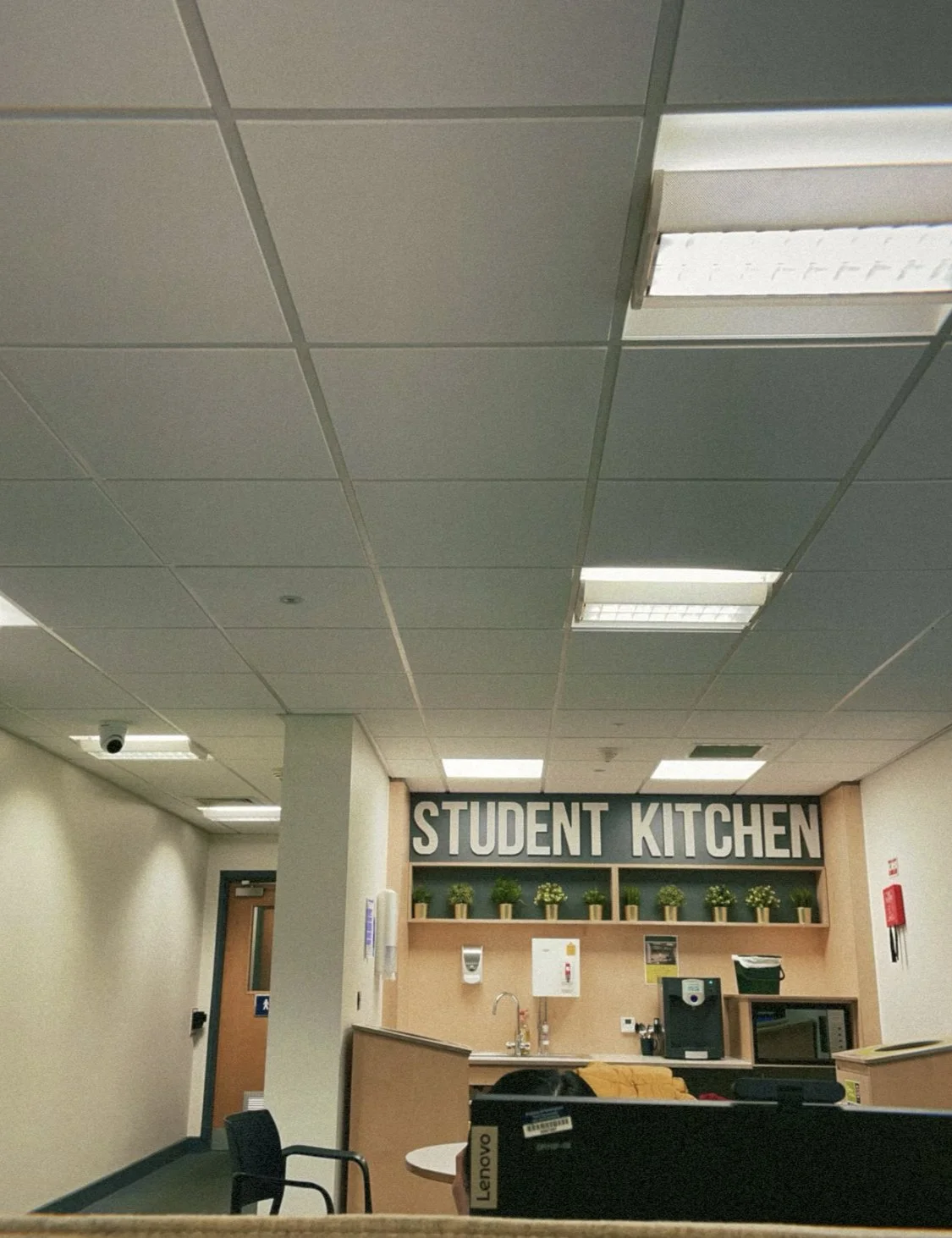Every university operates a little differently. The differences can pertain to the application they use for coursework online, campus layout, or offered services. When comparing Nottingham Trent University in the United Kingdom to Northern Arizona Univerity in the United States, it is important to understand they do not exemplify what university life is like within each university country. However, after speaking to some of my peers within a university in the UK, I have taken note of some major differences structurally between the UK and the US, and I will explain those.
When I first arrived at NTU, my first impression of the university was interesting, and I discussed my initial opinions of the school in a different blog, however, to summarize, I found it a bit smaller, and more student-focused and I thought the city campus setting was unique. This campus is almost incomparable to NAU’s campus due to its settings. With that being said, recently, I was told NTU is split into four campuses. The city campus is technically the main campus because it conducts the most events, but for the most part, each campus is its own “main campus.” Each campus holds different degrees. My campus is mostly art, design, architecture, and law, whereas Clifton, where my roommate attends classes holds the English courses, most of the STEM degrees, and all of the humanities classes. There are also two other campuses, in Brackenhurst and Mansfield. All of the campuses are in the region of Nottinghamshire. This makes each campus seem a lot smaller and the separation aids in allowing the universities to specialize in spaces for each of the specific majors in question. For example, NTU City Campus has all of the photography studios, whereas NTU Clifton has all of the labs. The libraries on each campus also reflect the degrees offered. I am not sure if other universities in the UK have a similar structure, but I found the division interesting. This is something I have never heard of or seen within the US, especially at universities with populations as large as NTU. The division of campuses can relate to my next point which is the structure of the UK’s education system.
In the UK, many students specialize in a career path earlier than in the US. In the US, students do not have to decide on an exact career path until their sophomore year of college, although most enter college with a career path in mind. In the UK, students start specializing in their version of high school, which in my opinion seems quite young to choose what you want to do for the rest of your life. This method of specializing earlier allows students to become masters of their subject matter earlier than US students, however, in many cases, it prevents students from being well-rounded. I was talking to another student in one of my classes and she explained that in the UK, students are very knowledgeable about one key subject matter, whereas in the US, students are somewhat educated about many subject matters. In the US, we believe in a liberal studies education system, meaning students learn about a wide range of subject areas, including literature, humanities, history, philosophy, and science. Many of the second-year students in my program have not taken a math class in several years, whereas I had to take two within university alone. Each of these methods of education has good and bad parts, however, after studying in both, I wholeheartedly believe a liberal studies education is important. My knowledge of vast amounts of subjects makes me adaptable, strengthens my problem-solving capabilities, and opens doors to several career opportunities after graduation. Another student I spoke to about their education structure explained to me that she did not necessarily want a career in the field of photography anymore, but felt that she did not have a choice because of how far she is on this path. Students here have much less flexibility to alter their career paths once they have made it to university, which can put students in this complicated situation.
Ultimately, each education system has its strengths and weaknesses, and ultimately, it depends on each individual to identify which method is better. In my personal opinion, I appreciate the education I obtained in the US, but I also can acknowledge that I would have thrived in the UK because I have always been steadfast in my career goals.









